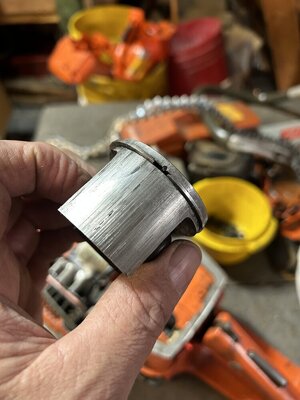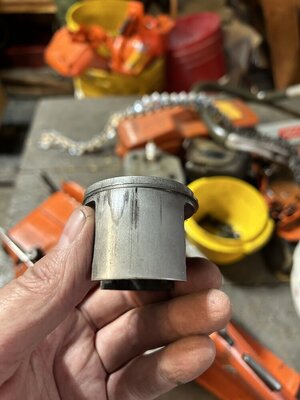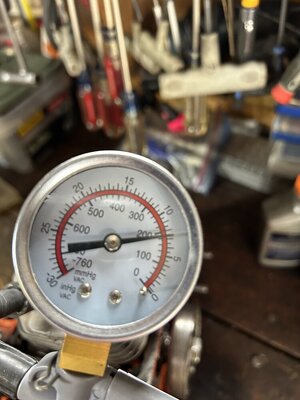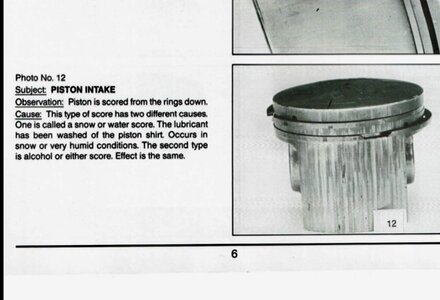Duce
Here For The Long Haul!
- Local time
- 10:34 AM
- User ID
- 809
- Joined
- Feb 6, 2016
- Messages
- 2,204
- Reaction score
- 7,532
- Location
- Roscommon, MI
Back story to saw. Neighbors son and friends cut a large circle in Higgins lake ice, around 100 foot diameter. Cut a square at it’s edge, made support for boat motor, spun ice around, built a fire in center and had a party. Dad is not too happy, I rebuild this saw about 3 years ago and he has owned since new. Saw piston is scored on both sides 

 and intake side is worse. My thoughts are it leaned out from running such cold air, or ingested water? Held vacuum just fine. Your opinions.
and intake side is worse. My thoughts are it leaned out from running such cold air, or ingested water? Held vacuum just fine. Your opinions.


 and intake side is worse. My thoughts are it leaned out from running such cold air, or ingested water? Held vacuum just fine. Your opinions.
and intake side is worse. My thoughts are it leaned out from running such cold air, or ingested water? Held vacuum just fine. Your opinions.





